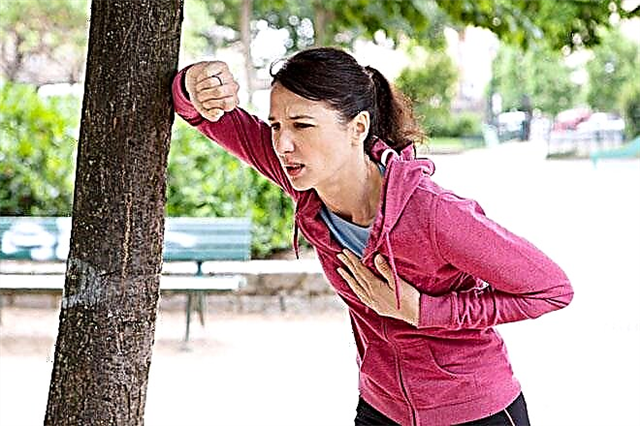The running technique seems simple only at first glance, in fact, it includes a lot of nuances. What do you think the technique affects? Not only the gracefulness of the runner's movements depends on it, but also his health, because non-observance of the rules leads to increased stress on the joints and ligaments, which is fraught with injuries and bruises. If you don't know how to run correctly, that is, running technique and basic movement, you will never be able to develop endurance. This means that you will not get pleasure from classes and quickly abandon this business.
And in general, do you want to run gracefully and at ease, catching the eyes of people passing by? Or do you prefer to waddle heavily from one leg to the other, awkwardly waving your arms, reminding others of either a duck or a pregnant penguin?
The question was rhetorical, you don't have to answer. So, let's take a look at the correct running technique for beginners, whose set of movements includes several elements:
- Hand movements;
- Body position;
- Footwork;
- Placement of the foot.

Hand work
First, let's figure out how to run properly in the area of hand technique. It is a big mistake to think that the main work during running is done by the legs. Hands play a huge role in the coordination of the whole body, acting as a balance bar and an accelerator (when gaining speed, the hands work harder), and a source of additional energy. Try running, straining your shoulders and half your strength will be wasted!
So, the basics of running technique in the field of hand work include the following nuances:
- The shoulder girdle should be completely relaxed;
- The arms are bent at the elbows at right angles;
- They move in sync with the legs, but in a different order;
- The hands are compressed into half fists, while the flow of air to the palms remains free (so as not to sweat). You can slightly collect your fingers, forming a "beak";
- While running, the hands move along the ribs - forward to the level of the sternum, backward until it stops;
We examined the technique of the hands when running, let's move on.

Body position
Running technique will never be correct if you do not learn how to properly hold the body.
- The back should remain straight, while the body bends slightly forward (no more than 7 °);
- The shoulders remain motionless, do not work in sync with the arms;
- The gaze looks forward, the head is kept straight, a slight downward tilt of up to 25 ° is allowed (to control the relief);
- Looking around and looking around, especially during the sprint, is not recommended. You will lose speed, you may stumble, lose concentration, catch your breath;
Professional athletes have excellent peripheral vision, which allows them to see everything that happens around them, without having to turn their heads.
We have analyzed the correct body position when running, then move on to the leg technique.

Footwork
So, now you know how to properly hold your arms and torso while running, it remains to deal with the legs and feet.
- Special attention is paid to the technique of leg movements, because correct running training, for the most part, sets the load on the lower body;
- The lift of the knee depends on the speed of the runner - the higher it is, the higher the hip.
- For example, the technique of marathon running implies a minimal rise of the knees, which outwardly looks like an athlete performing the exercise "overwhelm the legs back", but without touching the buttocks with the toes. Agree, a marathon is difficult to run while maintaining a very high speed.
- Also, the speed is affected by the contact time of the foot with the track - the less it is, the faster the athlete runs;
- When running, the legs should move so that the body only moves forward (not up);
- No matter how strange it may sound, you also need to be able to relax your legs while running. If you grasp this skill at least once, master the technique of even running forever. It's like riding a two-wheeled bike or swimming - you just need to catch the balance or feel the balance on the water, and you will never fall or drown again.

Foot placement
The running technique in the area of the foot position allows three options:
- Toe. It is practiced at short to medium distances where high speed and high cadence are required. This technique quickly tires and clogs muscles, so it is not suitable for long distances;
- From toe to heel. This technique is suitable for slow running - for cross-country runs, leisurely jogging, marathons, and long routes. This way of placing the foot is the most natural for a person (we walk like that from birth), and therefore allows you to economically spend energy on it.
- On the outside of the foot. Reduces the shock from the push that occurs when the foot hits the ground. At first, it requires special coordination, then the technique is memorized and performed intuitively.

How to run correctly?
We have examined how to run correctly in terms of the movements of different parts of the body. Next, we will voice the complex provisions of the correct technique, but first, a few important points:
- Never forget to warm up and cool down.
- Learn how to breathe properly, and what to do if you are out of breath;
- Purchase comfortable equipment and quality sneakers;
- Decide on the location;
- Eliminate contraindications for running.
How to jog on the street, what is the complete technique?
- The body is straight, the head is slightly tilted forward, looking forward;
- The arms are bent at the elbows, move backward / forward synchronously with the legs, in an opposite order;
- Average speed - 3 steps per second;
- For every two steps - inhale, the next two steps - exhale, etc.;
- The knee does not lift much, the pace is moderate;
- Putting the foot from heel to toe.

How long does it take to learn?
Learning the rules and technique of running on your own is not difficult, but there is a catch. Nobody will tell you that you are wrong somewhere, which means that you will move incorrectly. And retraining, as you know, is more difficult than learning from scratch.
That is why we recommend contacting a trainer who knows how to professionally set the running technique and teach the correct movements of each part of the body. A couple of lessons are enough and you no longer need a teacher. On average, in order to become familiar with the technique and easily perform it in the "autopilot" mode, it is enough from 14 to 30 days.

Frequent mistakes
- It is important to move your hands in a different order with your legs, otherwise the press will be overstrained and a waste of energy will occur;
- If the body leans forward too much, the spine will be overloaded, you will get tired faster, and lose speed.
- You can not move the body to the right and left. That is, in the process of jogging, the shoulders do not move, do not force the athlete to complete half-turns.
- Never tilt your head back or lift your shoulders up;
- Do not strain your legs or turn your socks out.
- Always start your workout with a warm up, and end with a cool down.
Well, now you know how to learn to run correctly - simple rules are unlikely to cause you any difficulty. Remember, you can only master this algorithm if your training is systematic. None of the instructions will replace practical experience, and therefore, turn off the computer and go to the treadmill.









